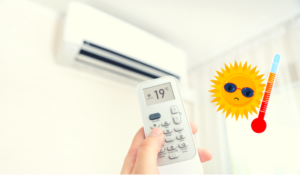As solar technology advances and prices come down, more people are using solar power for their homes and vans. One of the most popular sizes for residential and van use is the 300 watt solar panel.
Let’s look in detail at how much power a 300 watt panel can generate. We’ll look at some common household devices that can run on a 300 watt panel. Then, we will configure an appropriate battery size for the 300 watt panel. We will also show you how to estimate the amount of time it takes to charge batteries. Finally, we will touch on charge controller and inverter sizing for a 300 watt panel.
Table of Contents
How Much Power Does a 300 Watt Solar Panel Output Per Day?
A 300 watt solar panel is embedded with enough solar cells to generate an average output of 300 watts every hour under ideal conditions.
Ideal conditions are a standardized set of controlled conditions where a square meter of solar panel receives 1000 watts of sunlight. Solar output is then measured to get apples to apples comparisons between different models.
To estimate the total power output of a 300 watt panel per day, we need to find out the number of peak sun hours for your local area. Peak sun hours is based on solar irradiation data collected for a local region. This number represents the number of hours where a region gets 1000 watts per square meter of area. You can use the tool below that pulls data from the National Renewable Energy Laboratory or look up a Global Horizontal Irradiation Map.
Once you have the peak sun hours per day, we can begin to calculate the amount of solar power that you can generate per day. For example, if your local region gets 4 hours of peak sun, multiply 4 hours by 300 watts per hour to get a daily solar output of 1200 watts. Of course the actual solar panel output will vary depending on shading, pollution, season, and weather condition of the day.

What Can You Run with a 300 Watt Solar Panel?
In a perfect scenario, any device that draws under 300 watts can be run on the solar panel. In reality, your panel won’t be able to produce 300 watts consistently due to clouding and changing angle of the sun. These factors influence the amount of solar energy that reaches your panel.
Realistically, you will either need the grid or a battery bank to work in conjunction with your solar panel. That way, you can store unused power during the day and continue to draw electrical energy when the sun goes down at night.
On an hour per hour basis, below is a table of common household electric appliances that require less than 300 watts per hour to operate. Just bear in mind that without a battery or the grid, the appliance will shut down if solar output dips below the appliance’s operating wattage.
| Appliance | Watts |
| Box Fan | 200 |
| Clock Radio | 7 |
| Dehumidifier | 280 |
| Drill 1/4″ | 250 |
| Electric Blanket | 200 |
| Electric Shaver | 15 |
| Humidifier | 200 |
| Incandescent bulb (100 watt) | 100 |
| Laptop | 100 |
| LED bulb (100 watt) | 23 |
| LED bulb (60 watt) | 13 |
| Phone/Tablet Charger | 10 |
| Radio Receiver | 5 |
| Radio Transmitter | 75 |
| TV LCD 50″ | 150 |
How Many Batteries Do I Need For a 300 Watt Solar Panel?
To figure out the battery capacity for a 300 watt solar panel, let’s take a look at how much power this panel can produce in a day. In the above section, you’ve already looked up the number of peak sun hours in your local area.
Let’s say you get 4 peak sun hours daily on average. To get the total watts your solar panel produces per day. Multiply 300 watts by 4 hours to get 1200 watt hours.
300 w x 4 H = 1200 wH
As for batteries, the most common batteries are 12 or 24 volts. Aside from voltage, the type of battery can impact the battery size. The most common solar batteries are lead acid deep cycle batteries or lithium batteries.
Let’s say you are using 12V batteries. That puts the amperage requirement at 100 amp hours.
1200 wh ÷ 12 V = 100 ah
A 12 volt battery would have to have 100 amp hours to be able to store up to 1200 watt hours of power. But we are not quite done.
Lead acid batteries have a recommended depth of discharge of 50%, meaning you can draw them down to about 50% before having to charge them back up again. Lithium ion phosphate batteries have a depth of discharge at about 80 to 95%, with some brands reaching a 100% depth of discharge.
If you are using lead acid batteries you need to double up to 200 ah in order to make up for the 50% depth of discharge.
Since the depth of discharge of lithium batteries varies quite a bit. Let’s say you end up getting lithium batteries that have 80% depth of discharge, you can adjust for the depth of discharge by dividing 100 ah by 0.8 to get 125 ah. Lithium ion batteries of 100 ah to 125 ah would work for a 300 watt solar panel.
How Fast Will a 300 Watt Solar Panel Charge a Battery?
In order to protect the batteries from damage, you’ll have to use a solar charge controller to modulate the voltage and current coming from the solar panel. There are two main types of charge controllers, MPPT and PWM , differentiated by price and charge controller efficiency.
MPPT charge controllers are more efficient and expensive, they retain about 98% of the electrical power from the solar panel. PWM charge controllers are more affordable but retain about 80% of electrical power.
Most small solar setups use PWM charge controllers because the total loss is not large enough to justify the extra cost of a MPPT charge controller.
Assuming the efficiency of the PWM charge controller is 80%.
300 watt x 80% = 240 watts
If the 12 volt battery has a 125 ah capacity. It can fill up to 1500 watt hours.
12 v x 125 ah = 1500 wh
To figure how long it would take to fill 1500 watt hours.
1500 watt hours ÷ 240 watts = 6.25 hours
It would take a 300 watt panel a little over 6 hours to charge a 12v battery with 125 amp hours.
What Size Charge Controller for a 300 Watt Solar Panel?
If you are using a PWM charge controller, you’ll have to make sure of two things.
- The nominal voltage of the battery bank must match the charge controller voltage. If you have a 12v battery for the 300 watt solar panel, the charge controller must also be 12v.
- The allowable input current of the charge controller must be higher than the solar panel’s output current. Solar output current <= charge controller input current
If the solar panel is 300 watts and 12 volts, then its current is 25 amps. PWM charge controllers can get damaged if the current from the solar panel is higher than what the charge controller can take in. To build in some safety buffer, we can get a PWM charge controller that is 12 volts and 30 amps, 5 amps over the solar panel output current.
The wattage is a rough estimate that is based on an ideal air temperature of 25 degrees celsius or 77 degrees Fahrenheit. Once you have the solar panel’s technical specifications, you can make realistic voltage calculations to find the right match of inverters and charge controllers. Use the following air temperature calculator and read more about the effects of cold temperature on solar system in detail.
How to find Inverter Size for a 300 Watt Solar Panel?
So far the power that’s generated by the solar panel and stored by the battery has been in DC (direct current). Most of our household appliances run on AC (alternating current). To convert the direct current into alternating current, we need an inverter.
There are two types of inverters, pure sine wave inverter and modified sine wave inverter. Pure sine wave inverters deliver a smoother signal and tend to be better for electronics. Modified sine wave inverters are more affordable but deliver a choppier signal. If you are running sensitive electronics such as medical equipment, you’ll have to get a pure sine wave.
Inverters are sized by watts and they should be close to the wattage of the solar panel. The recommended ratio of solar panel to inverter wattage ratio is about 1.2. So a 300 watt solar panel should have an inverter that is no less than 250 watts.
300 watts ÷ 1.2 = 250 watts
What Wire Size for a 300 Watt Solar Panel?
Wire sizes are important for any solar set up. Because having a wire that’s too small or too long contributes to energy loss and can even be a fire hazard.
In order to get the correct wire size, we need to know the current that will be flowing in the system and the type of wire we will be using. Generally, copper is the gold standard.
We already know the solar system is 300 watts. We also know the solar panel and battery are both 12v. So the current is 25 amps.
300 W ÷ 12 V = 25 A
Now if we look up the current in an ampacity chart, we can see that the smallest size that 25 amps can take is 10 AWG (American Wire Gauge).






